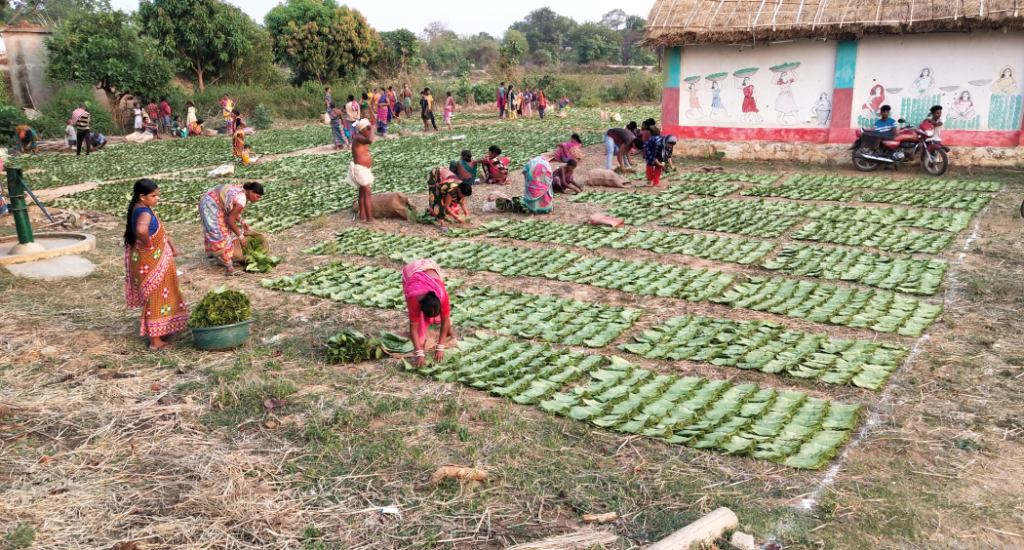Sonepur: The lack of a dedicated kendu leaf division in Subarnapur district has resulted in the continued exploitation of rural labourers who collect the leaves, along with the ineffective implementation of welfare schemes intended for their benefit.
Often referred to as the ‘green diamond’ of western Odisha, kendu leaf provides vital seasonal income to thousands of collectors who sell those to the government.
According to reports, at present, Subarnapur has no independent kendu leaf division. Instead, its nine kendu leaf ranges operate under the jurisdictions of Bolangir, Sambalpur, and Redhakhole divisions.
For example, the ranges in Khaliapali, Singhbahali, and Tarbha under Sonepur block fall under Bolangir division. Similarly, the Ulunda block’s Ulunda, Jaloe, and Sindol ranges are managed by the Sambalpur division, while Bahalpadar and Khandhata ranges in Birmaharajpur block are under the Rairakhol division.
Also Read: You won’t believe the secrets these lesser-known Odisha temples are hiding! #4 will shock you
Approximately 26,000 kendu leaf workers in the district are involved in tasks ranging from plucking, drying, and turning leaves to storing them in godowns. Despite the government’s formation of welfare committees for both collectors and binders, implementation remains inadequate. Provisions such as footwear for plucking during dry seasons, financial aid, and insurance allegedly remain on paper. Workers are also entitled to benefits like gratuity upon retirement and essential supplies—mosquito nets, blankets, and lanterns— for binders.
The state government has committed to paying insurance premiums under the Janashree Bima Yojana for kendu leaf workers. In case of natural death, workers’ families are entitled to receive Rs 30,000, and Rs 1 lakh in case of accidental death, alongside annual educational assistance for up to two children from Class IX to XII. However, these schemes are reportedly falling through the cracks due to the apathy of departmental officials.
While kendu leaf trade in the district generates over Rs 7 crore in annual revenue, workers’ voices remain unheard. Most are unable to travel to divisional offices located in Bolangir, Sambalpur, or Redhakhole due to financial and logistical constraints. Consequently, despite their crucial role in sustaining this revenue stream, these labourers, many from impoverished families, continue to be exploited.
Further allegations of corruption surface annually during leaf procurement. Workers claim they are pressurised to collect more leaves than officially required, with the excess not being accounted for in government records, raising concerns about misappropriation and underpayment.
Experts said the lack of a dedicated divisional office in Subarnapur district has severely hindered the fair administration of welfare measures and allowed systemic exploitation to persist. Establishing a local division could pave the way for accountability and much-needed relief for the district’s kendu leaf workers, they added.
When contacted, Subrata Kumar Patra, DFO of Redhakhole Kendu Leaf Division in Sambalpur district, said that due to cotton cultivation on forest and grazing land, the production of kendu leaves has decreased in the Bahalpadar and Badakirasira areas. “These two ranges fall under Subarnapur district. Whenever complaints related to labour exploitation comes to our knowledge, we are addressing them,” he added.
PNN
